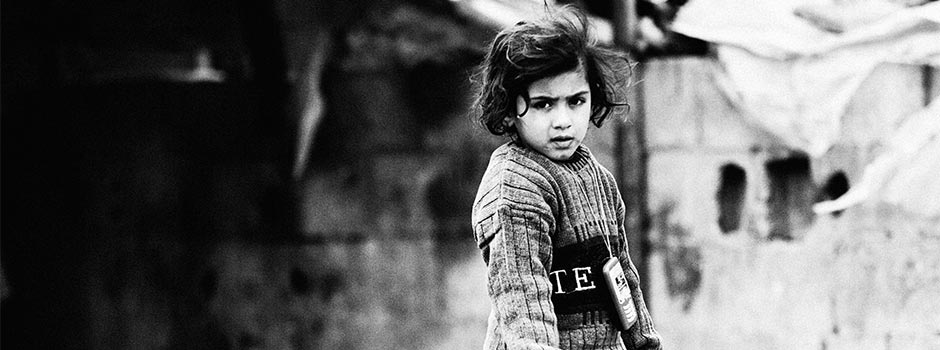
Exhibition at Meem Gallery (January 27 – February 6, 2014) Children of Gaza
Jan 20, 2014 Exhibition

Meem Gallery is pleased to present the Children of Gaza exhibition. In 2009 three international photographers with the support of Save the Children entered Gaza. For nearly two weeks the award winning photographers, Anthony Dawton, Jim McFarlane and Giuseppe Aquili photographed children and their families, victims of the Israeli incursion of 27 December 2008. The images are extraordinary. They tell of what happened and the damage done, physically and psychologically but they also tell of a people, particularly the children, bright, intelligent and full of hope.
The exhibition is as dramatic in its presentation as the images themselves are. It comprises of twenty-one black and white photographic art works each 1.5 x 1 metres. Included in the exhibition are eighteen original pieces, inspired by the photographic images, from the renowned artist Dia Al-Azzawi. His images provide a vivid and colourful contrast to the imposing monochrome images of Aquili, Dawton and McFarlane. The digital manipulations represent a new path in the work of his oeuvre.
The exhibition hopes to define the process in which art can bring understanding to seemingly intractable political conflict as well as to highlight the terrible consequences long and short term of such conflicts. Proceeds from the exhibition will support Save the Children’s project in Gaza in partnership with the Salam ya Seghar Fund. Salam ya Seghar have been supporting Save the Children’s work in Gaza since 2012 and with their support Save the Children have been able to reach thousands of children with access to healthcare, nutrition and better opportunities. The exhibition should be considered as an installation and the event itself a ‘happening’.
"The unique characteristic of the camera is that it catches the moment (the legacy of Cartier-Bresson). Here a child has just wiped away his tears. Whether they are tears of anger or sadness is not clear. His fierce pride is an automatic reaction having been ‘caught’ crying. He holds in his hand, weapon like, a cucumber. It is a helpless response." (Jim McFarlane)
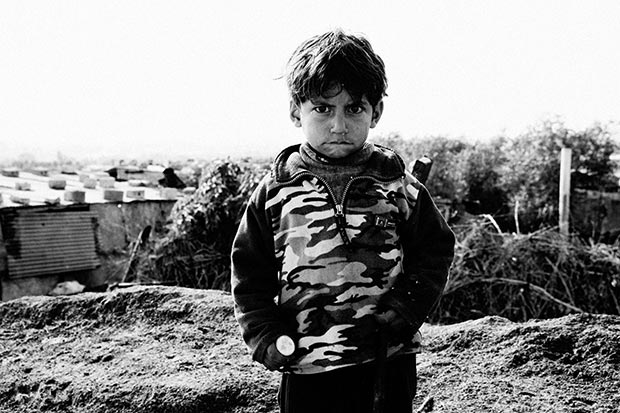 Jim McFarlane / Boy with Uncertain Look / Courtesy of Meem Gallery and the Artist
Jim McFarlane / Boy with Uncertain Look / Courtesy of Meem Gallery and the Artist
"This is a complex and perhaps serendipitous image taken as we followed this girl and her family to their shelled house. It is a warning, as if one is needed in a place such as Gaza, that a child’s spirit is not always joyous or unbreakable." (Anthony Dawton)
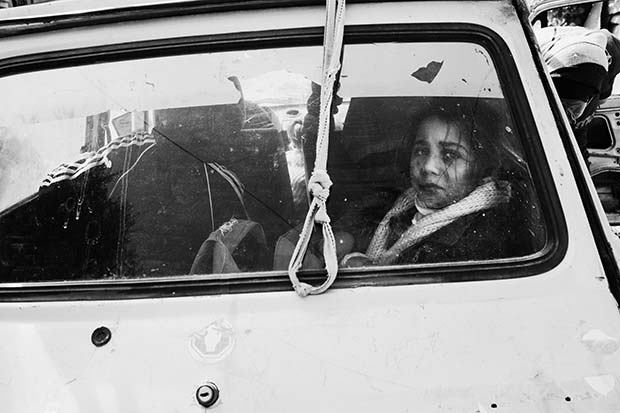 Anthony Dawton / Girl through Car Window, Deir al Balah / Courtesy of Meem Gallery and the Artist
Anthony Dawton / Girl through Car Window, Deir al Balah / Courtesy of Meem Gallery and the Artist
"Children say so much with a look. There seems nothing more to add to this image, except to note that the girl is standing in the remnants of her former home, a toy mobile-phone hung around her neck; even now I cannot help but wonder, who is it that she calls?" (Anthony Dawton)
 Anthony Dawton / Girl in the Middle of her House, Gaza City / Courtesy of Meem Gallery and the Artist
Anthony Dawton / Girl in the Middle of her House, Gaza City / Courtesy of Meem Gallery and the Artist
"In visiting this school, and talking to the students and their teachers, I was at first bewildered by the extremes of hope and despair expressed. On looking closer, however, I saw faces illuminated by a dignity born of a belief in a better and reconciled future. Yet in the shrapnel damage to the wall, so reminiscent of blood in shape and texture, is a grim reminder that the future may not prove so hopeful." (Anthony Dawton)
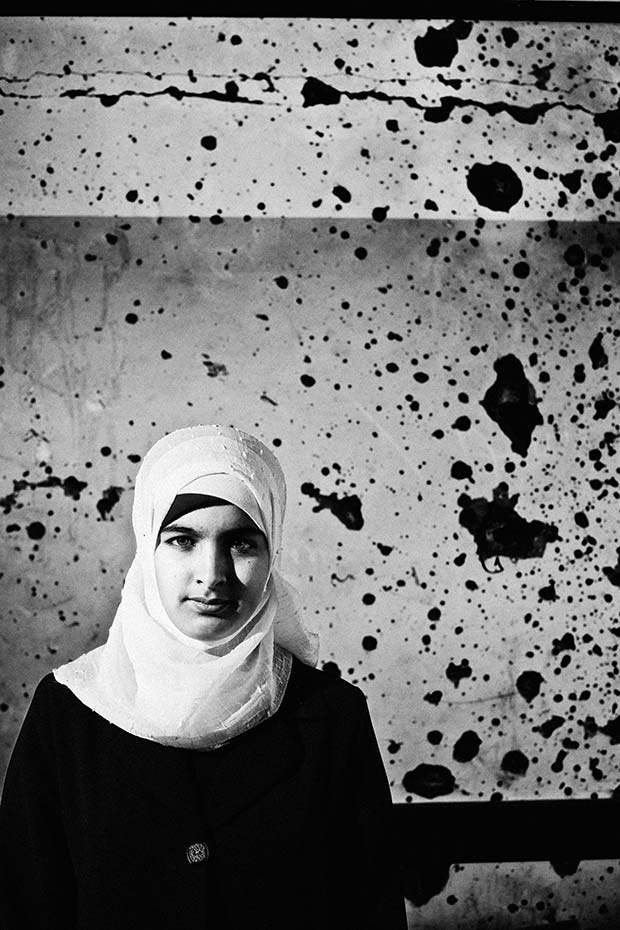 Anthony Dawton / Girl Against a Wall / Courtesy of Meem Gallery and the Artist
Anthony Dawton / Girl Against a Wall / Courtesy of Meem Gallery and the Artist
Black and White images were printed in London at Touch Art Studio by the photographer on Hahnemuhle Photorag 308gsm under archival conditions, Epson Ultra K3 inks, 157.91 x 111.79 cm. These are large art works printed at the studio of Dia Azzawi in London. They are produced in a very limited edition of six. They are signed, stamped and come with a document of authentication signed by the artist.
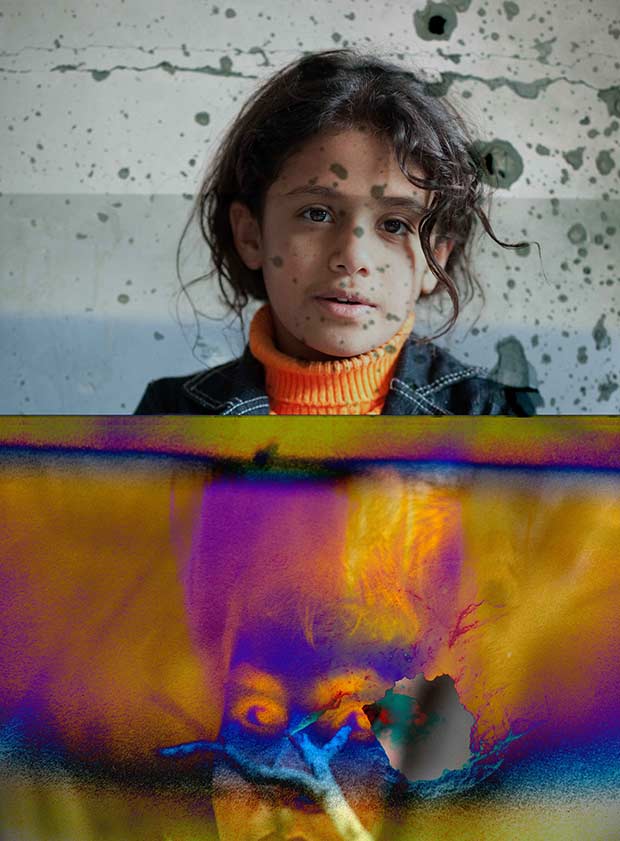 Dia Azzawi / Image No. 6, Print 70 x 90 cm. 2011. Edition of 5 Plus 1 Artist Proof / Courtesy of Meem Gallery and the Artist
Dia Azzawi / Image No. 6, Print 70 x 90 cm. 2011. Edition of 5 Plus 1 Artist Proof / Courtesy of Meem Gallery and the Artist
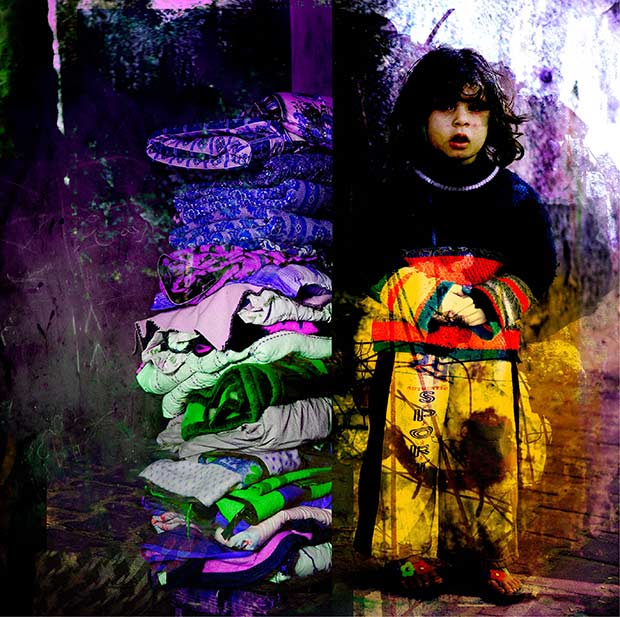 Dia Azzawi / Image No. 1, Print 100 x 100 cm. 2011 Edition of 5 Plus 1 Artist Proof / Courtesy of Meem Gallery and the Artist
Dia Azzawi / Image No. 1, Print 100 x 100 cm. 2011 Edition of 5 Plus 1 Artist Proof / Courtesy of Meem Gallery and the Artist
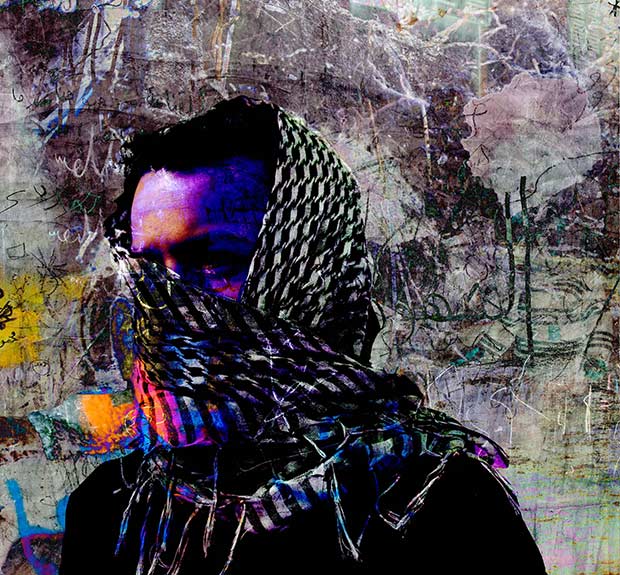 Dia Azzawi / Image No. 2, Print 100 x 100 cm. 2011 Edition of 5 Plus 1 Artist Proof / Courtesy of Meem Gallery and the Artist
Dia Azzawi / Image No. 2, Print 100 x 100 cm. 2011 Edition of 5 Plus 1 Artist Proof / Courtesy of Meem Gallery and the Artist
 Dia Azzawi / Image No. 4, Print 100 x 100 cm. 2011 Edition of 5 Plus 1 Artist Proof / Courtesy of Meem Gallery and the Artist
Dia Azzawi / Image No. 4, Print 100 x 100 cm. 2011 Edition of 5 Plus 1 Artist Proof / Courtesy of Meem Gallery and the Artist
Dia Al-Azzawi was born and raised in Iraq. Al-Azzawi has lived in London since 1976, where he has successfully created his own identity in the discerning circles of the mainstream art world, championing and choosing to express himself in a style that is essentially Arab. Considered one of the finest colourists among contemporary Iraqi artists, Al-Azzawi’s paintings echo the resplendent colours of his homeland. Affected like all Iraqis by his country’s terrible events, he makes ever-daring use of sizzling reds and bold purples to reflect these tragic events: dark, rich colours that are, as he admits, reflective of Arab culture.
His vibrantly coloured abstract works in oils may be reminiscent of his Sumerian heritage, but his works are not just expressions of Iraqi folklore. Al-Azzawi’s work looks ahead, taking his art beyond the folkloric and sovereign art form. It produces the kind of contemporary art that can be showcased in international art galleries, where it is appreciated by a wide section of culturally divergent and influential people.
Over the decades, Al-Azzawi has built an international reputation as a brilliant artist. His work has been exhibited extensively in Europe, the Middle East, US and India. His works are held in the collections of the British Museum, Tate Modern, The Library of Congress, the Museums of Modern Art in Damascus, Amman and Tunisia, as well as the Musée de l’Institut du Monde Arabe.
Anthony Dawton is an award winning commercial photographer, winning the Fuji Industrial Photographer of the Year, amongst others. His clients include Mercedes Benz, J Walter Thompson, Tetrapak, BBC, and British Gas. His work has been published in the British newspapers The Guardian and the Independent. He was photographer-in-residence for the iconic arts magazine Funoon Arabia. His overseas clients include the Monte Carlo Opera House, Louvre, Museum of Iraq, Abha Festival in Saudi Arabia and Xenal Industries, Saudi Arabia as well as the Government of Oman.
He was one of six photographers to be featured in the Australian CCP exhibition that toured South East Asia for twelve months in 2010. Images from a UNICEF/Al Madad project in Niger were selected to show at the 2009 Sony World Photographic Awards, in Cannes. Anthony Dawton has been a contributing photographer to the The Silent Witnesses book series Kashmir's Children The Silent Witnesses of the Earthquake and Desert Faces, The Silent Witnesses of the Niger Children. He lectures in London on photography and counts Lewis Hines, Eugene Smith, Michael Duane and Jim Goldberg as important influences on his work and approach to photography.
Jim McFarlane is an Australian based photographer who has worked commercially for over twenty-five years. His expertise covers a wide range of subjects including food, dance, people and annual reports. McFarlane’s food photography is seen on a vast range of food packaging and appeared in the Sunday Herald-Sun (Sydney) every week for seven years. The Australian Ballet uses Jim extensively for advertising and editorial work including overseas work in China and Japan. Jim has been awarded by The Melbourne Art Director’s Club and received the Oriental Fine Print award. Companies and organizations that have engaged McFarlane include BHP Billiton, Esso, Visa card, Heinz, Edgell, Nestle, McCormick Foods, Birds Eye, John West, The Australian Opera, Leggo’s, Mazda, Price Waterhouse and The National Bank. His work is also included in the collection of the Australian National Library. Images from a UNICEF/Al Madad project in Niger were selected to show at the 2009 Sony World Photographic Awards in Cannes.
Currently McFarlane is teaching art photography at Australia’s leading art college Deakin University, Melbourne. He lists his formative influences as: Lee Freidlander, Eugene Smith, Irving Penn, Pep Bonet and Bill Brandt.
Giuseppe Aquili was born in 1974 in Ancona, Italy. He studied photography at the Experimental Design Centre in Ancona where he was influenced by the Marché photographer Mario Giacomelli and Pep Bonet, as well as the artists Egon Schiele and Alberto Giacometti. He worked in Italy for several years before coming to England in 1999 where he has worked on projects in Oman, Albania and Nigeria as well as in the UK. Images from a UNICEF/Al Madad project photographed in Niger were selected to show at the 2009 Sony World Photographic Awards, in Cannes as well as on the UN calendar. Giuseppe has recently returned to Italy.
Comments
Add a comment